Your search returned 638 results in the Theme: indigenous.
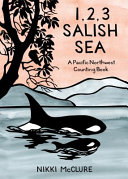
1 2 3 SALISH SEA
By: nikki mcclure | Published: January 2021
From one to ten and beyond, explore the Salish Sea in this visually striking, high-concept counting primer. Acclaimed West Coast artist Nikki McClure... [Read More]
From one to ten and beyond, explore the Salish Sea in this visually striking, high-concept counting primer. Acclaimed West Coast artist Nikki McClure uses a single piece of paper and an X-ACTO knife to create her simple yet exquisite images. Whether it's one stubby squid or one million raindrops, readers young and not-so-young will delight in this distinctly Pacific picture book.
Theme: Indigenous
- ISBN
9781459827370 - Binding
Hardcover Canadian - Category
Picture Book
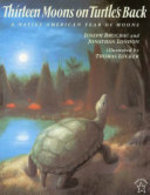
13 MOONS ON TURTLE'S BACK
By: joseph bruchac | Published: January 2002
Celebrates the seasons of the year through poems from the legends of such Native American tribes as the Cherokee, Cree, and Sioux.
Theme: Indigenous
- ISBN
9780698115842 - Binding
Paperback - Category
Traditional Single Stories - The Americas
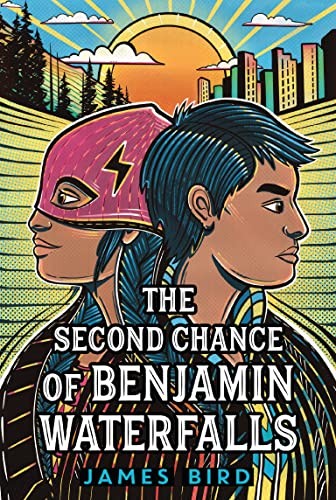
2ND CHANCE OF BENJAMIN WATERFALLS
By: james bird | Published: August 2023
Theme: Indigenous
- ISBN
9781250811585 - Binding
Paperback - Category
Junior Fiction
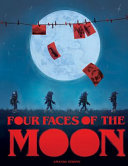
4 FACES OF THE MOON
By: amanda strong | Published: June 2021
On a journey to uncover her family's story, Spotted Fawn travels through time and space to reclaim connection to ancestors, language, and the... [Read More]
On a journey to uncover her family's story, Spotted Fawn travels through time and space to reclaim connection to ancestors, language, and the land--creating a path forward in this essential graphic novel. In the dreamworld she bears witness to a mountain of buffalo skulls. They stand as a ghostly monument to the slaughter of the Plains bison to near extinction-- a key tactic to starve and contain the Indigenous People onto reservations. On this path, Spotted Fawn knows she must travel through her own family history to confront the harsh realities of the past and reignite her connection to her people and the land. Her darkroom becomes a portal, and her photographs allow her glimpses into the lives of her relatives over the course of four chapters of this book, which follow the phases of the moon. Time and space become unlocked and unfurl in front of her eyes. Guided by her ancestors, Spotted Fawn's travels through the past allow her to come into full face--like the moon itself. Adapted from the acclaimed stop-motion animated film of the same name, written and directed by Amanda Strong, Four Faces of the Moon brings the oral and written history of the Michif, Cree, Nakoda and Anishinaabe Peoples and their cultural link to the buffalo alive on the page. Deeply resonant and beautifully rendered, this graphic novel retelling is essential reading. Backmatter by Dr. Sherry Farrell-Racette (Michif), an associate professor of Native Studies and Women's and Gender Studies at the University of Manitoba, provides information on Michif culture and history and the injustices of colonialism.
Theme: Time Travel, Indigenous
- ISBN
9781773214535 - Binding
Paperback Canadian - Category
Graphic Novel Children's
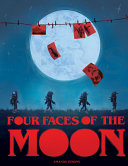
4 FACES OF THE MOON
By: amanda strong | Published: June 2021
On a journey to uncover her family's story, Spotted Fawn travels through time and space to reclaim connection to ancestors, language, and the... [Read More]
On a journey to uncover her family's story, Spotted Fawn travels through time and space to reclaim connection to ancestors, language, and the land--creating a path forward in this essential graphic novel. In the dreamworld she bears witness to a mountain of buffalo skulls. They stand as a ghostly monument to the slaughter of the Plains bison to near extinction-- a key tactic to starve and contain the Indigenous People onto reservations. On this path, Spotted Fawn knows she must travel through her own family history to confront the harsh realities of the past and reignite her connection to her people and the land. Her darkroom becomes a portal, and her photographs allow her glimpses into the lives of her relatives over the course of four chapters of this book, which follow the phases of the moon. Time and space become unlocked and unfurl in front of her eyes. Guided by her ancestors, Spotted Fawn's travels through the past allow her to come into full face--like the moon itself. Adapted from the acclaimed stop-motion animated film of the same name, written and directed by Amanda Strong, Four Faces of the Moon brings the oral and written history of the Michif, Cree, Nakoda and Anishinaabe Peoples and their cultural link to the buffalo alive on the page. Deeply resonant and beautifully rendered, this graphic novel retelling is essential reading. Backmatter by Dr. Sherry Farrell-Racette (Michif), an associate professor of Native Studies and Women's and Gender Studies at the University of Manitoba, provides information on Michif culture and history and the injustices of colonialism.
Theme: Time Travel, Indigenous
- ISBN
9781773214542 - Binding
Hardcover Canadian - Category
Graphic Novel Children's
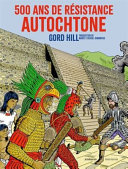
500 ANS DE RESISTANCE AUTOCHTONE
By: gord hill | Published: February 2023
Antidote à l’histoire officielle des Amériques, 500 ans de résistance autochtone dépeint d’une perspective autochtone la résistance des... [Read More]
Antidote à l’histoire officielle des Amériques, 500 ans de résistance autochtone dépeint d’une perspective autochtone la résistance des Premiers Peuples contre les colonisateurs et autres oppresseurs, du premier contact jusqu’à aujourd’hui. La bande dessinée présente des événements marquants comme l’invasion espagnole des empires aztèque, maya et inca, la révolte des Pueblos au Nouveau-Mexique, la bataille de Wounded Knee et, plus récemment, les manifestations Idle No More. Au Canada, elle aborde notamment la crise d’Oka et les manifestations anti-pipeline des Wet’suwet’en. Cette œuvre éclaire les luttes passées et actuelles des Premiers Peuples pour la souveraineté et l’autodétermination.
Theme: Indigenous, #OwnVoices, BIPOC
- ISBN
9782897443955 - Binding
Hardcover French - Category
French Graphic Novel Teen
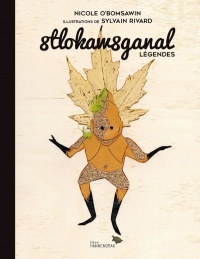
8TLOKAW8GANAL - LÉGENDES
By: obomsawin nicole | Published: September 2020
Nicole O'Bomsawin, anthropologue, conteuse et militante w8banaki, publie un premier album jeunesse. Dans 8tlokaw8ganal / Légendes, Nokmes Marmotte... [Read More]
Nicole O'Bomsawin, anthropologue, conteuse et militante w8banaki, publie un premier album jeunesse. Dans 8tlokaw8ganal / Légendes, Nokmes Marmotte raconte l'origine des petits êtres de pierre et Nmahom nous emmène dans un sentier de la forêt à la découverte des êtres vivants qui l'habitent. Voici venue l'occasion de s'initier à la mythologie w8banaki! Les magnifiques illustrations sont signées par l'artiste Sylvain Rivard. Un lexique se trouve à la fin du livre pour découvrir la signification et la prononciation des mots en w8banaki.
Theme: Indigenous, Mythology
- ISBN
9782923926506 - Binding
Hardcover French - Category
French Picture Book - Advanced

A IS FOR ANEMONE
By: roy vickers | Published: May 2021
Bestselling and award-winning children's book collaborators Roy Henry Vickers and Robert Budd come together again to create a colourful West Coast... [Read More]
Bestselling and award-winning children's book collaborators Roy Henry Vickers and Robert Budd come together again to create a colourful West Coast alphabet board book.
Theme: Indigenous
- ISBN
9781550179477 - Binding
Hardcover Canadian - Category
Board Book
22171442.jpeg)
ÂMÎ OSÂWÂPIKONES - DEAR DANDELION
By: s.j. okemow | Published: May 2023
Both a love letter to the dandelion and a call to love ourselves in a difficult world, Âmî Osâwâpikones reminds us that we are not defined as... [Read More]
Both a love letter to the dandelion and a call to love ourselves in a difficult world, Âmî Osâwâpikones reminds us that we are not defined as others see us. Following our young protagonist and the dandelions through the seasons, we are reminded that we are resilient, we are healers, we are funny, and we are loved.
Theme: Indigenous
- ISBN
9781773217406 - Binding
Hardcover Canadian - Category
Picture Book
9185103.jpg)
ABALONE WOMAN
By: teoni spathelfer | Published: March 2022
A vivid dream teaches Little Wolf about courage and acceptance of those who are different, and inspires her to show her daughters and their... [Read More]
A vivid dream teaches Little Wolf about courage and acceptance of those who are different, and inspires her to show her daughters and their classmates how to be proud of their diverse cultural backgrounds.
Theme: Indigenous
- ISBN
9781772034110 - Binding
Hardcover Canadian - Category
Indigenous
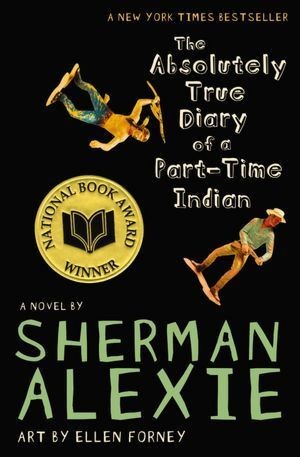
ABSOLUTELY TRUE DIARY OF A PART-TIME IND
By: sherman alexie | Published: September 2007
Budding cartoonist Junior leaves his troubled school on the Spokane Indian Reservation to attend an all-white farm town school where the only other... [Read More]
Budding cartoonist Junior leaves his troubled school on the Spokane Indian Reservation to attend an all-white farm town school where the only other Indian is the school mascot.
Theme: Indigenous
- ISBN
9780316013680 - Binding
Hardcover - Category
Intermediate Fiction
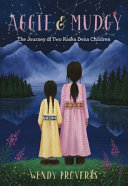
AGGIE & MUDGY - THE JOURNEY OF 2 KASKA D
By: wendy proverbs | Published: November 2021
Based on the true story of the author's biological mother and aunt, this middle-grade novel traces the long and frightening journey of two Kaska Dena... [Read More]
Based on the true story of the author's biological mother and aunt, this middle-grade novel traces the long and frightening journey of two Kaska Dena sisters as they are taken from their home to attend residential school. When Maddy discovers an old photograph of two little girls in her grandmother's belongings, she wants to know who they are. Nan reluctantly agrees to tell her the story, though she is unsure if Maddy is ready to hear it. The girls in the photo, Aggie and Mudgy, are two Kaska Dena sisters who lived many years ago in a remote village on the BC-Yukon border. Like countless Indigenous children, they were taken from their families at a young age to attend residential school, where they endured years of isolation and abuse. As Nan tells the story, Maddy asks many questions about Aggie and Mudgy's 1,600-kilometre journey by riverboat, mail truck, paddlewheeler, steamship, and train, from their home to Lejac Residential School in central BC. Nan patiently explains historical facts and geographical places of the story, helping Maddy understand Aggie and Mudgy's transitional world. Unlike many books on this subject, this story focuses on the journey toresidential school rather than the experience of attending the school itself. It offers a glimpse into the act of being physically uprooted and transported far away from loved ones. Aggie and Mudgy captures the breakdown of family by the forces of colonialism, but also celebrates the survival and perseverance of the descendants of residential school survivors to reestablish the bonds of family.
Theme: Indigenous, Based on True Events, Residential Schools
- ISBN
9781772033755 - Binding
Paperback Canadian - Category
Junior Fiction
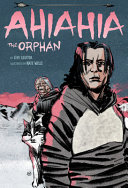
AHIAHIA THE ORPHAN
By: levi illuitok | Published: August 2022
After his parents are brutally murdered, Ahiahia is raised by his grandmother in a camp surrounded by enemies. His grandmother knows that eventually... [Read More]
After his parents are brutally murdered, Ahiahia is raised by his grandmother in a camp surrounded by enemies. His grandmother knows that eventually the camp will turn on Ahiahia, just as it did his parents, so she chants a protection chant over the clothing that she lovingly sews for him, over the amulet and necklace she gives him, even over the dog that is his companion. When he is attacked, Ahiahia must use his agility, hunting skills, and the protection imparted by his grandmother to stay alive.
Theme: Indigenous, Inuit
- ISBN
9781772274431 - Binding
Hardcover Canadian - Category
Graphic Novel Teen
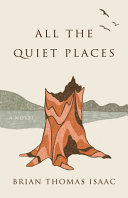
ALL THE QUIET PLACES
By: brian isaac | Published: October 2021
Brian Isaac's powerful debut novel All the Quiet Places is the coming-of-age story of Eddie Toma, an Indigenous (Syilx) boy, told through the young... [Read More]
Brian Isaac's powerful debut novel All the Quiet Places is the coming-of-age story of Eddie Toma, an Indigenous (Syilx) boy, told through the young narrator's wide-eyed observations of the world around him. It's 1956, and six-year-old Eddie Toma lives with his mother, Grace, and his little brother, Lewis, near the Salmon River on the far edge of the Okanagan Indian Reserve in the British Columbia Southern Interior. Grace, her friend Isabel, Isabel's husband Ray, and his nephew Gregory cross the border to work as summer farm labourers in Washington state. There Eddie is free to spend long days with Gregory exploring the farm: climbing a hill to watch the sunset and listening to the wind in the grass. The boys learn from Ray's funny and dark stories. But when tragedy strikes, Eddie returns home grief-stricken, confused, and lonely. Eddie's life is governed by the decisions of the adults around him. Grace is determined to have him learn the ways of the white world by sending him to school in the small community of Falkland. On Eddie's first day of school, as he crosses the reserve boundary at the Salmon River bridge, he leaves behind his world. Grace challenges the Indian Agent and writes futile letters to Ottawa to protest the sparse resources in their community. His father returns to the family after years away only to bring chaos and instability. Isabel and Ray join them in an overcrowded house. Only in his grandmother's company does he find solace and true companionship. In his teens, Eddie's future seems more secure--he finds a job, and his long-time crush on his white neighbour Eva is finally reciprocated. But every time things look up, circumstances beyond his control crash down around him. The cumulative effects of guilt, grief, and despair threaten everything Eddie has ever known or loved. All the Quiet Places is the story of what can happen when every adult in a person's life has been affected by colonialism; it tells of the acute separation from culture that can occur even at home in a loved familiar landscape. Its narrative power relies on the unguarded, unsentimental witness provided by Eddie.
Theme: Coming of Age, Gr. 7-12, Indigenous, Residential Schools
- ISBN
9781990071027 - Binding
Paperback Canadian - Category
Young Adult Fiction

AMAJURJUK
By: levi illuitok | Published: April 2022
In this traditional Inuit story, a father must find and rescue his child from the lair of this ogress.
Theme: Indigenous
- ISBN
9781772274318 - Binding
Paperback Canadian - Category
Traditional Single Stories - The Americas
